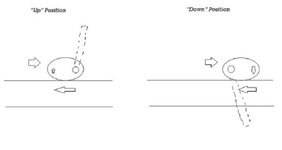darcisowers
Member
tonight my lathe (Jet 1014) is bugging me!! Tomorrow I will try to call Jet customer service, but we have no warranty....so I figured I'd also ask here!
The process goes something like this:
tighten up the main tailstock handle, then put in the blank
turn the tailstock handwheel until snug, then tighten the lock handle
turn on lathe
start turning, only to have stock stop spinning once the gouge makes contact with the blank.
notice that the main tailstock handle is now coming loose, and now the entire tailstock is MOVING.
??????
Repeat, asking hubby to come watch, just to prove that I'm not an idiot. Nope, does the same thing for him! GRRRR.
Then out of sheer frustration, we loosened the lock nut (just a tad) that locks down the tailstock, but why would that need to be done? It's holding for the moment, but we're not turning anything too hard tonight.
Anyone have any ideas?
Darci
The process goes something like this:
tighten up the main tailstock handle, then put in the blank
turn the tailstock handwheel until snug, then tighten the lock handle
turn on lathe
start turning, only to have stock stop spinning once the gouge makes contact with the blank.
notice that the main tailstock handle is now coming loose, and now the entire tailstock is MOVING.
??????
Repeat, asking hubby to come watch, just to prove that I'm not an idiot. Nope, does the same thing for him! GRRRR.
Then out of sheer frustration, we loosened the lock nut (just a tad) that locks down the tailstock, but why would that need to be done? It's holding for the moment, but we're not turning anything too hard tonight.
Anyone have any ideas?
Darci

